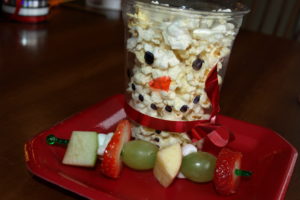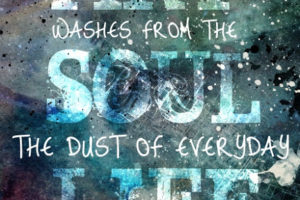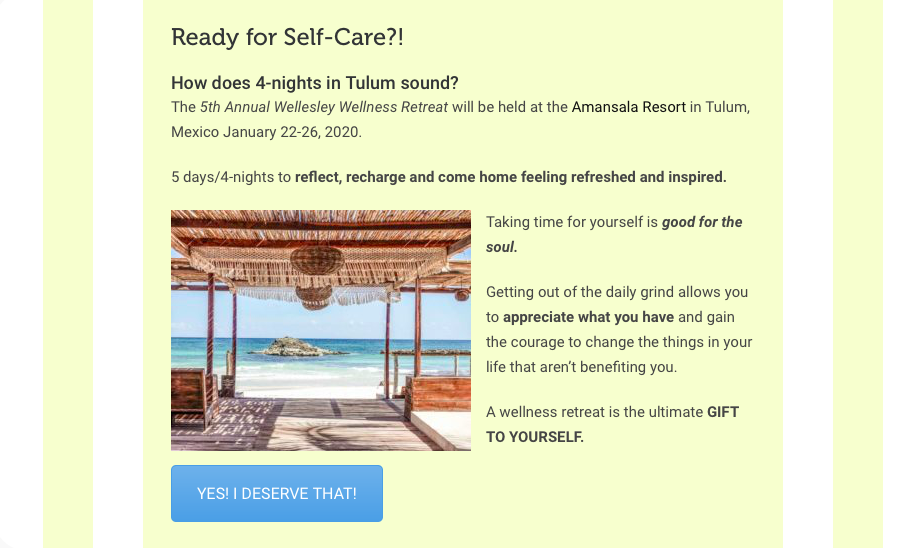2 Simple Rules for Healthy Eating
In one of my first posts last February, I commented how healthy eating can be complicated. At the time, I was a little overwhelmed learning about The Dirty Dozen and even more so knowing that our family’s favorite fruits are at the top of the Dirty Dozen list.
Since then, I have been trying to learn as much as I can about eating well. Working in the health field, I feel like I have a decent grasp on how to eat well, but know there is much to learn. There are things I was taught during the low-fat, low-cal craze that are way out of date.
There are so many different “diets” that people follow – Vegan, Vegetarian, Flexitarian, Atkins, Gluten-Free, Paleo, Weight Watchers, Mediterranean, among others. Not to mention the cleanses, liquid diets and other weight loss products people purchase to “kick-start” eating well.
As much as I hate that billions of dollars are spent each year on weight loss products, I am in no place to judge. I just try to look at the positive that at least people are trying to make healthy changes.
Everyone is unique on what they find helpful on trying to lead a healthy life, just as everyone has different reasons for why they follow a certain diet or eat the way they do. The one thing consistent is that food does, and always will, play a large role in our lives.
I think that no matter why you decide to eat certain foods it is important to know what exactly it is you are eating.
I wanted to share a few resources that I have found very helpful on learning about the food you choose to eat and simplifying what choices to make.
Michael Pollan is the author of The Omivore’s Dilemma, In Defense of Food, Food Rules: An Eater’s Manual, and several others. He is a journalist and for the past 25 years has been writing about “the places where nature and culture intersect: on our plates, in our farms and gardens, and in the built environment.”
He understands how complicated healthy eating has become and has simplified it into 7 words.
Eat Food. Mostly Plants. Not too much.
After reading a few of Pollan’s books, I finally realized that ignorance is not bliss when it comes to knowing what I put into my body. I still have much to learn and to do, but I wanted to share the two changes that I have made.
No matter what “diet” or healthy eating guidelines you follow, these are 2 things that are universal in healthy eating.
1) Eating more whole real foods.
2) Eating less processed foods

I have used Pollan’s tips from his book Food Rules: An Eater’s Manual to work on accomplishing these goals. He breaks his 7 words (Eat Food. Mostly Plants. Not too much) into 64 simple tips under each of the 3 categories. I love the simplicity and feasibility of the changes.
A few specific changes I’ve made –
- Reading the ingredients. Do you read the food label? If so – what is the first thing you look at – fat, calories? Unless you have food allergies, reading the ingredients is often a change for most people – I know it was for me!
- Avoiding food products containing ingredients you wouldn’t cook with yourself. Ethoxylated diglycerides. Cellulose. Xanthan. Calcium propionate. I have no idea what these food additives are, do you??
- Avoiding products that contain high-fructose corn syrup (HFCS) HFCS (another form of sugar) is controversial on whether it is worse for you than regular sugar, but it is something I don’t mind avoiding. Who needs added sugar? I was surprised to find out that it was in brands of applesauce, whole wheat bread, raspberry vinaigrette salad dressing and whole wheat Ritz crackers that I had purchased. Fortunately, it is easy to find the same items with all natural ingredients by simply reading the label.
- Shopping the edges of the store. This is a common tip if you are trying to eat less processed foods. Fresh foods like produce, dairy, meats, fish etc. line the walls and processed foods are in the middle, so buying primarily from the outside will prove for a healthier cart!
- Shopping at the Farmer’s Market. This is one place you won’t find anything processed! Just make sure you actually buy the produce and not just the treats that you can often find.
- Planting a garden. After planting my first garden this summer, I can say that it did help increase my veggie intake. There was nothing better than making a fresh spinach salad with cucumbers, tomatoes and peppers picked straight from the back yard!
100 Days of Real Food
A great resource to help with eating more whole foods and less processed foods is 100 Days of Real Food. A few years ago the blog author, Lisa Leake read Michael Pollan’s book, In Defense of Food, and realized that she needed a serious overhaul on her eating habits. She shares practical, simple and valuable tips on how and why you should eat more real food. I love this site and it has been really helpful!
Check out her Real Food Tips first. Three good ones to read if you are still in the learning phase-
10 Reasons to Cut Out Processed Food
And for those of you who love the structure of following guidelines, you can sign up to take a 10-Day Pledge or follow the 14 weeks of mini-pledges.
Food Babe
Another great site if you want to learn more about avoiding harmful ingredients and what is in the foods you purchase is Food Babe. She has useful information, as well as reports on food at Panera, Chick-fil-A, Chipotle, Moes, Whole Foods, Starbucks, and Subway. Some of the information I’m pretending I didn’t read! 🙂
Have you tried to cut out processed foods? Read Michael Pollan’s work? What about visited 100 Days of Real Food or Food Babe?
Please share if you have other great sites, resources or tips related to eating more real food and cutting out processed foods.
Here’s to eating well!
Love,
Molly





